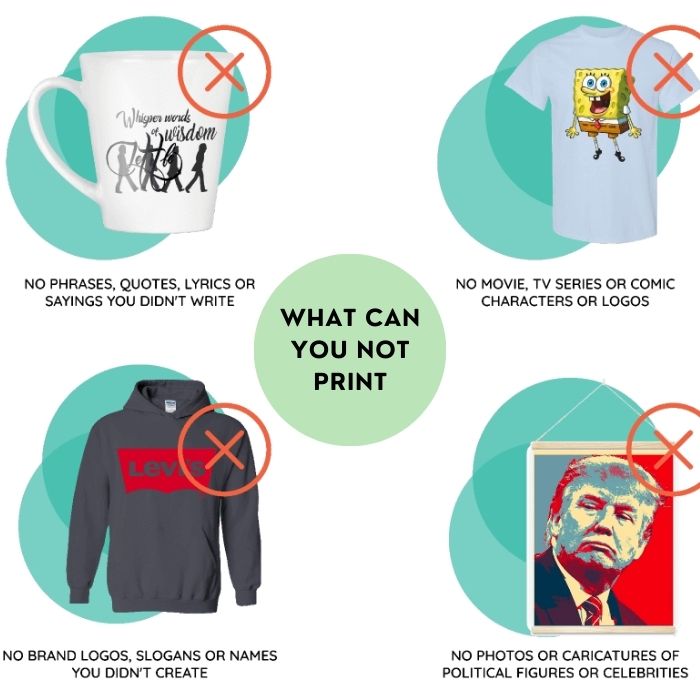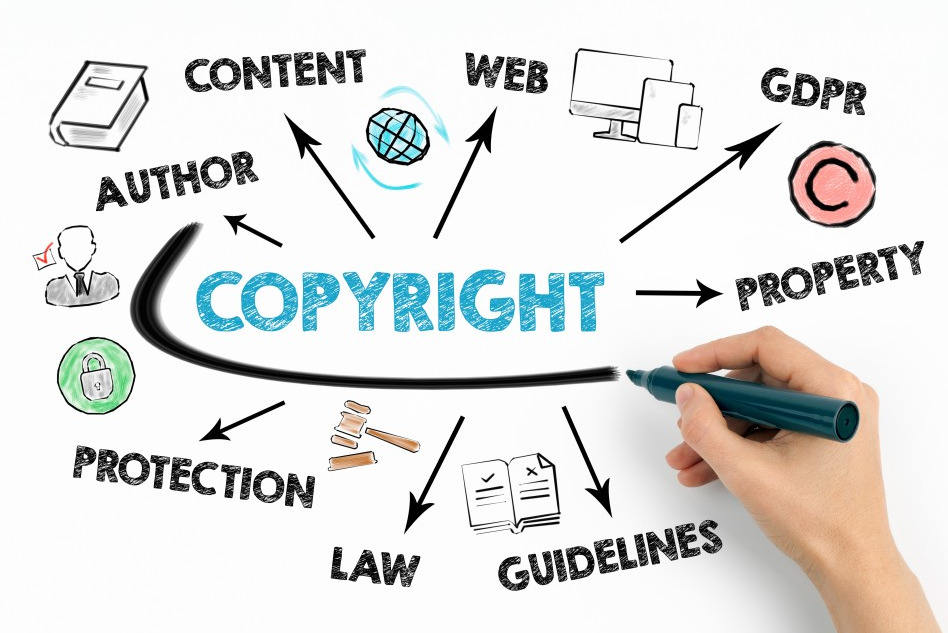Contents
Print on Demand (POD) has revolutionized the way businesses and individuals approach the printing and distribution of creative works. POD makes it simple to create and sell one-of-a-kind products like T-shirts and home decor without the need for large upfront or the complexity of inventory management. The fulfillment service, which handles the printing, packaging, and shipping of products on behalf of the creator, is one of the main components of POD.
Anybody who wants to operate a profitable POD business needs this service since it frees them up to concentrate on developing and selling their products while leaving the logistics to the pros. Additionally, with so many channels and markets accessible to reach a worldwide audience, the growth of eCommerce has made it simpler than ever to sell POD products online.
In this guide, we will cover everything you need to know about Print on Demand Copyright, fulfillment services, and e-commerce platforms to help you create a successful business in this industry.
What is Print on Demand Copyright?
Print on Demand Copyright refers to the legal protection of intellectual property rights in the Print on Demand industry. It ensures that the designer retains the sole right to reproduce and distribute their work. This is especially important in the Print on Demand industry, where designs are printed on products only when an order is placed, and unauthorized designs pose a risk of copyright infringement if printed and sold.
Print on Demand (POD) ecommerce refers to digital storefronts and online marketplaces that specialize in selling Print on Demand products. These platforms enable entrepreneurs to showcase their designs, reach a larger audience, and simplify the sales process. POD ecommerce platforms typically integrate with fulfillment services, which handle the printing, packaging, and shipping of products on the seller’s behalf.
Shopify, Etsy, and Amazon Merch are popular ecommerce platforms for Print on Demand. Each platform has its own distinct set of features and benefits, and it is critical to select the platform that best meets your company’s requirements. Entrepreneurs can build a successful Print on Demand business that delivers high-quality products to customers while adhering to copyright laws with the right ecommerce platform and fulfillment service.

What are the copyright implications of print-on-demand?
Copyright implications are important when it comes to print-on-demand, especially for original designs created by artists, designers, and entrepreneurs. Some of the main effects of POD on copyright are listed below:
- Ownership: Any work that is created through POD gives the creator or publisher the ownership of the copyright. This means that they can legally control how and where their content is used, and are able to receive royalties when it is sold or reproduced.
- Infringement: Print-on-demand removes the risk of infringing upon someone else’s copyrighted material since all the content is created from scratch and can be easily verified.
- Licensing: Any content creator needs to obtain permission or a license from the Copyright owner to use their text materials, images or POD works. If used arbitrarily, this person will risk legal consequences and fines.
- Piracy: POD also reduces the risk of piracy since all content is tracked and monitored digitally. This helps to ensure that content creators are properly credited for their work and compensated when it is sold or reproduced.
- Distribution: POD also gives original creator of the design the ability to easily distribute their work worldwide. They can easily create copies of their material and have them sent to different locations all over the world, allowing for a wider reach and more potential customers.
In general, print-on-demand technology aids in shielding publishers and content producers from piracy, illegal distribution, and copyright violations. Additionally, it gives them a practical mechanism to manage how their content is distributed and collect royalties when it is bought or copied.
Eventually, this permits creators to properly safeguard their work and make sure that they are receiving the correct pay for it.
Using copyrighted materials in print on demand products
It might be a legal quagmire to use copyrighted materials in print-on-demand items. The original works of original designs created by artists, designers and other creators are safeguarded by copyright law. Text, pictures, and other kinds of creative works fall under this category.
You could be held accountable for copyright infringement if you use copyrighted assets in your print on demand products without the owner’s consent. You can face legal repercussions for this, such as damages, fees, and other penalties.
There are primarily two ways to lawfully include copyrighted content into print-on-demand products:
Request approval from the copyright holder
Getting consent from the copyright owner is the simplest approach to lawfully use copyrighted assets in print-on-demand items. This may entail speaking with the copyright holder personally or working with a licensing organization to secure the required authorizations.
Use public domain materials
Public domain content is not covered by copyright protection and may be freely utilized in print-on-demand products. This contains works for which the copyright has expired as well as those that were previously published before 1923 and are no longer covered by copyright.
There are other additional legal methods to use copyrighted works in addition to these choices, such as fair use and the doctrine of first sale. These, however, are intricate legal matters that must to be discussed with an experienced lawyer.
Difference between trademark and copyright
Both copyright and trademarks are forms of intellectual property protection that are used to protect works of art, although they have different functions and cover various facets of art.
Original creative works such as literature, film, music, software, and works of art are protected by copyright. It forbids unauthorized reproduction, distribution, or display of the author’s work and grants the author the sole right to do so. After the creator’s passing, copyright protection is perpetual and automatic.
The name, logo, or slogan that is used to identify a business or product, on the other hand, is protected by a trademark. It is used to stop others from using a name or logo that is similar to the brand’s in order to avoid confusing customers or harming the brand’s reputation. Government applications must be made in order for trademark protection to be granted. As long as it is being used and the trademark owner submits the required renewals, it can remain in effect eternally.
For example: Merchize would trademark its name and logo in addition to copyrighting the images and videos it produced.
In conclusion, trademark protection covers names, logos, and catchphrases that identify a brand or product, whereas copyright protection covers creative works. While trademarks can be sought for and awarded by the government and can remain indefinitely as long as they are utilized and renewed, copyright is automatic and has a predetermined duration.
How to Secure Print on Demand Copyright?
The following actions can be taken by content producers to protect their Print On Demand (POD) copyright:
- Register the work with the copyright office: Registering a work with a copyright office can assist prevent infringement by providing legal proof of ownership. Copyright registration is not required, however it might be beneficial in establishing ownership in the event of a dispute.
- Use digital rights management (DRM) or a watermark: Watermarks can be used to denote ownership and combat piracy. DRM can also be used to prevent unlawful digital file sharing or copying.
- Monitoring of violations: Online tools and services are available for content providers to keep an eye on unlawful uses of their work. To safeguard their copyright, they can take the proper legal action if they find an infringement.
- Includes copyright and license notices: Add copyright and licensing information in a POD document to assist establish ownership and specify how the work may be used or shared. This can lessen the chance of miscommunications and potential violations.
- Utilize trustworthy POD service providers: Content creators should make use of trustworthy POD service providers that have clear policies about ownership and use of copyrights. Before utilizing the service, they should carefully read the terms and conditions to make sure their copyright is safeguarded.
In order to secure print-on-demand, actions must be taken to establish ownership, stop infringement, and engage recognized service providers. Creators of content can safeguard their intellectual property rights and stop unauthorized use of their creations in this way.
Conclusion
Finally, while Print-on-Demand (POD) services provide numerous advantages to content creators and publishers, they also have significant copyright implications. Print on demand Copyright ownership, licensing, and infringement are all issues that content creators must be aware of. Creators should register their work, use a reputable POD service, including copyright notices, obtain necessary permissions and licenses, monitor their work, and take prompt legal action if infringement occurs to secure their copyright.
It is critical to understand that trademarks and copyright are two distinct types of intellectual property protection that apply to different subject matter and serve different purposes. While copyright safeguards original works of authorship, trademark safeguards the brand or source of goods or services.
Merchize.com is an example of a print-on-demand fulfillment service that helps content creators navigate the copyright implications of their work. Content creators can effectively protect their intellectual property rights when using POD services like Merchize by understanding copyright laws and taking the necessary precautions.







